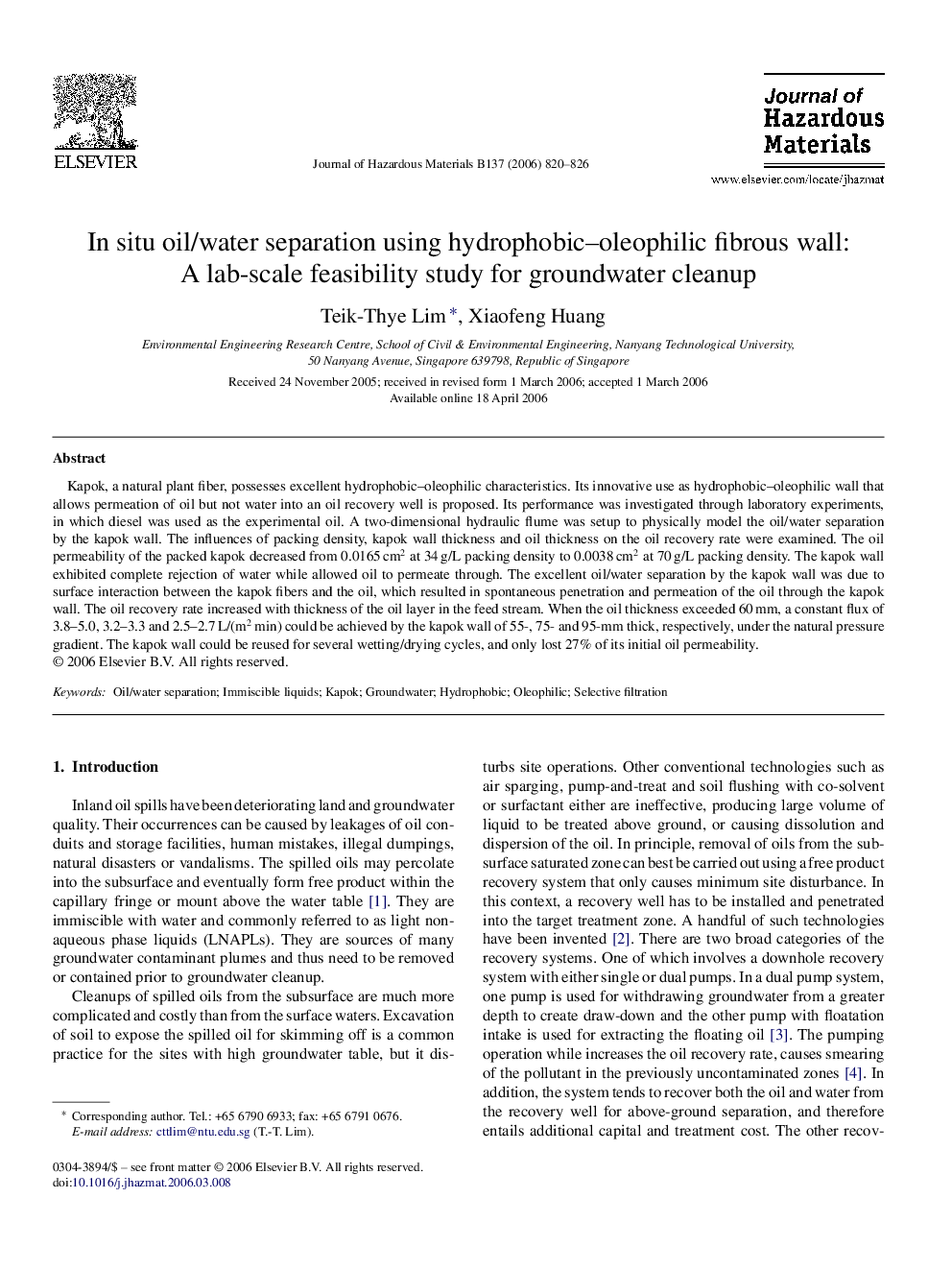| Article ID | Journal | Published Year | Pages | File Type |
|---|---|---|---|---|
| 585322 | Journal of Hazardous Materials | 2006 | 7 Pages |
Abstract
Kapok, a natural plant fiber, possesses excellent hydrophobic-oleophilic characteristics. Its innovative use as hydrophobic-oleophilic wall that allows permeation of oil but not water into an oil recovery well is proposed. Its performance was investigated through laboratory experiments, in which diesel was used as the experimental oil. A two-dimensional hydraulic flume was setup to physically model the oil/water separation by the kapok wall. The influences of packing density, kapok wall thickness and oil thickness on the oil recovery rate were examined. The oil permeability of the packed kapok decreased from 0.0165Â cm2 at 34Â g/L packing density to 0.0038Â cm2 at 70Â g/L packing density. The kapok wall exhibited complete rejection of water while allowed oil to permeate through. The excellent oil/water separation by the kapok wall was due to surface interaction between the kapok fibers and the oil, which resulted in spontaneous penetration and permeation of the oil through the kapok wall. The oil recovery rate increased with thickness of the oil layer in the feed stream. When the oil thickness exceeded 60Â mm, a constant flux of 3.8-5.0, 3.2-3.3 and 2.5-2.7Â L/(m2Â min) could be achieved by the kapok wall of 55-, 75- and 95-mm thick, respectively, under the natural pressure gradient. The kapok wall could be reused for several wetting/drying cycles, and only lost 27% of its initial oil permeability.
Related Topics
Physical Sciences and Engineering
Chemical Engineering
Chemical Health and Safety
Authors
Teik-Thye Lim, Xiaofeng Huang,
